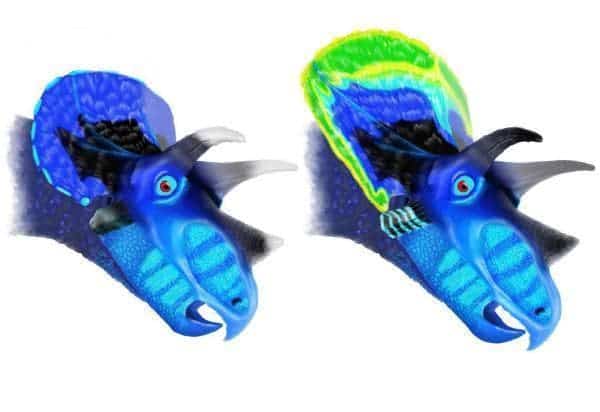A recent study conducted by a Montana State University doctoral student and one of the world’s top paleontologists shed some new light on more than 100 years of thought regarding the dinosaurs known as Triceratops and Torsaurus. The general belief since the late 1800s was that they were two separate dinosaurs: Triceratops had three horns on its skull with a short frill, while Torosaurus had a way bigger frill that was also perforated by two large holes.

However, MSU paleontologists John Scannella and Jack Horner claim that this is in fact the case of the same dinosaur, and two different stages of growth. This also backs up the rising theory that towards the end of their days, the dinosaurs’ diversity was almost depleted.
The confusion easily sets in because juvenile dinosaurs are not just smaller versions of the “big boys”. They had several significant differences, and especially their skulls changed radically as they grew up.
Paleontologists are at a disadvantage because we can’t go out into the field and observe a living Triceratops grow up from a baby to an adult,” Scannella said. “We have to put together the story based on fossils. In order to get the complete story, you need to have a large sample of fossils from many individuals representing different growth stages.”
Their research forces paleontologists to further take into consideration the process of growth from a juvenile to an adult, called ontogeny, when they are judging morphological variations in different dinosaur species.
“Without considering changes in shape throughout ontogeny, we overestimate dinosaur diversity and hence produce an unrealistic view of the paleoecology of these animals,” Scannella said.
The thing is, Torosaurus specimens are much rarer than Triceratops and none of the Torosaurus fossils came from immature animals, so the obvious problem that comes in mind is why are the mature specimens much rarer than the younger ones?
“If Torosaurus is actually the mature form of Triceratops, we must ask why ‛Torosaurus’ specimens are relatively rare compared to Triceratops,” Scannella said. “It is possible that mortality was fairly high for Triceratops before they reached their fully mature morphology.”
In order to come to this conclusions, they examined over 50 Triceratops skulls, examining the length, width and thickness. Many thanks should also go to the numerous undergrads and volunteers from all around the world who participated in the project by discovering and excavating Triceratops specimens in the field, as well as to those who helped prepare the fossils.
“A major decline in diversity may have put the dinosaurs in a vulnerable state at the time when the large meteor struck the Earth at the end of the Cretaceous Period,” Scannella said. “It may have been the combination of the two factors — lower diversity and a major global catastrophe — that resulted in the extinction of all the non-avian dinosaurs.”






